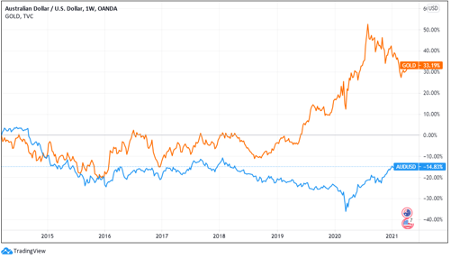Introduction
In Australia, forex trading is the most popular in CFD trading among Australian residents and international traders trading with Australian-based brokers. This article will discuss how to trade forex in Australia, how the Australian commodity market impacts forex trading, and the significance of the Australian forex time.
How to Trade Forex in Australia?
Forex trading in Australia isn’t that different from forex trading in any part of the world. Remember that the forex market is decentralised and operated 24 hours a day for five days a week – for retail traders at least.
The first step in trading forex CFD with an Australian broker is to ensure that the broker is licensed and registered with the Australian Securities and Investments Commission (ASIC). The forex brokers must be ASIC to provide the CFD trading services they offer. This guarantees that the broker adheres to strict licencing requirements. Notably, ASIC is considered one of the toughest and most reputable financial sector regulators globally.
ASIC is the primary financial services sector regulator in Australia. Its mandate includes overseeing the issuance of superannuation, insurance, banking, and financial products to consumers in Australia. It regulates the financial services sector, the consumer credit sector, and the financial market activities such as the stock market, market makers, and brokers.
Although ASIC doesn’t regulate the forex market (no financial authority in the world does), it ensures compliance by the brokers operating under its jurisdiction. Trading with a forex broker registered and regulated with ASIC guarantees that your funds are protected and that you trade under transparent conditions.
How to Verify ASIC Licensing?
Every forex broker is required to disclose the financial services regulator that has licensed them to operate in a particular jurisdiction. Typically, most brokers have this information disclosed under the “About” section on their websites. It shows their address and the license number. Don’t just take their word for it. Go to the ASIC’s official website and search the license number to confirm if the broker is indeed registered and licensed by ASIC.
The Significance of the Australian Forex Time
The hour forex market is divided into different forex market hours – London, New York, Tokyo, and Sydney. The forex market is open from 9.00 PM GMT on Sunday and closes at 8.00 PM GMT on Friday. The different forex market hours are classified according to the regular banking hours in the various global business hubs, typically from 8.00 AM to 4.00 PM local time.
In Australia, the forex market hour is from 10 PM to 7 AM GMT, between 7 AM and 4 PM ACT (Australian Central Time). Data from the Bank for International Settlements show that the Sydney forex session experiences the lowest trading volume. However, this is the first session of the week when the market opens on Sunday; it often has higher trading volume as traders flood the forex market, check on their trades from the previous week and make new deals for the upcoming week.
Typically, forex pairs with AUD have the highest liquidity during the Sydney forex session. Note that any macroeconomic and geopolitical developments in Australia impact forex trading during this session.
How the Australian Commodity Market Impact Forex Trading
There is a distinct correlation between the forex and the commodity markets. Remember that the valuation of a given currency is mostly dependent on a country’s macroeconomic conditions – with international trade being one of the most significant ones. In this case, if a country is a significant producer of a given commodity, the commodity’s price fluctuation will significantly impact the domestic currency’s forex exchange.
Globally, Australia is the second-largest producer of gold – just behind China and one of the top producers of silver. Therefore, it stands to reason that the price of gold and silver is directly correlated to the fluctuation in the Australian dollar value. Thus, when the price of gold and silver rises, we can expect that the AUD will be bullish. Conversely, when the price of gold and silver drops, we can expect that the AUD will adopt a bearish trend.
AUD/USD vs Gold

AUD/USD vs Silver

We hope you find this article informative. In case of any questions, please let us know in the comments below. Cheers!